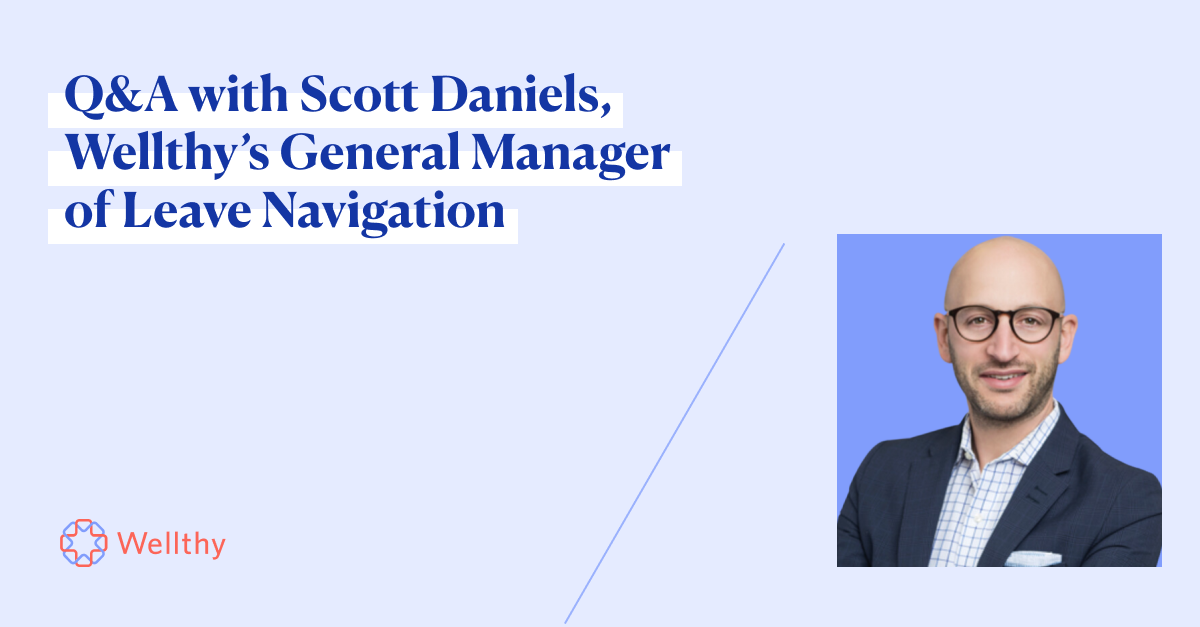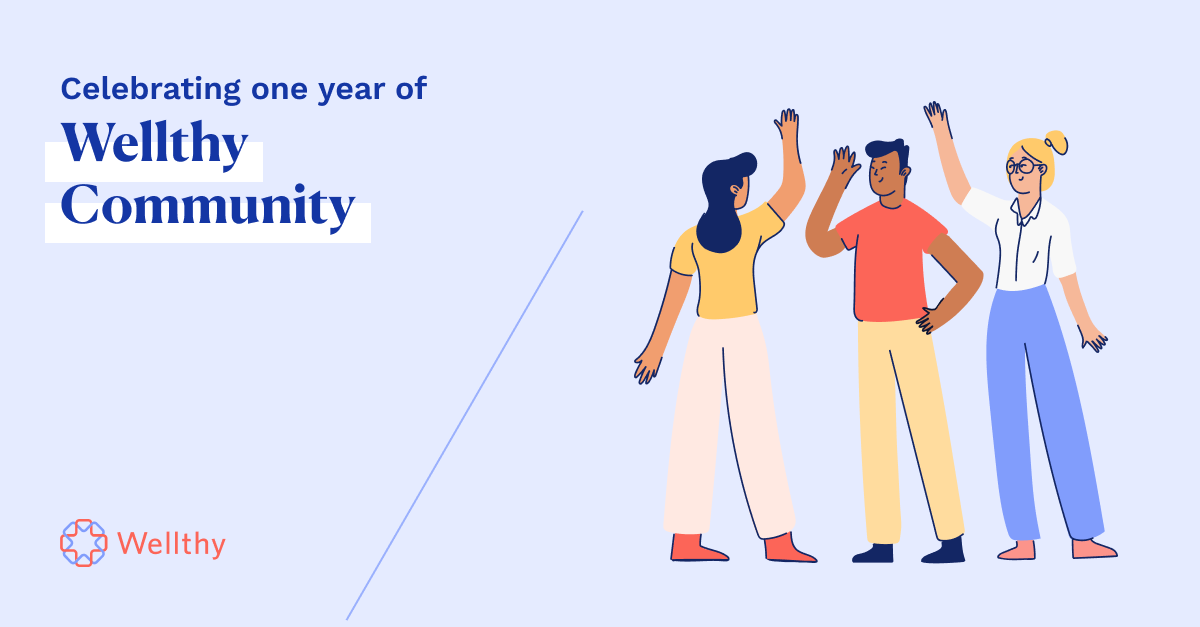Ellen Rudy, Ph.D., M.P.H., has spent more than 25 years as an advocate for public health — work that’s seen her on the frontlines of some of the most consequential and pressing health issues of our time, and work that’s led to leadership roles in some of the biggest and most innovative healthcare companies and startups.
Ellen has joined Wellthy as our first Head of Population Health — a role that will see her leading programming and research that measures Wellthy’s impact on family caregivers, and further expands the company's care concierge solution to drive better health outcomes for older adults and their caregivers.
We asked Ellen about what inspires her about joining Wellthy, her own personal caregiving stories, why she thinks we are entering one of the most consequential moments in history for family caregivers, and what innovation is happening in the healthcare sector to help families navigate the complexity and challenges of caring for themselves and their loved ones. Check out her answers and insights below.
Former First Lady Rosalynn Carter once said: “There are only four kinds of people in the world — those that have been caregivers, those that are caregivers, those who will be caregivers, and those who will need caregivers?” You come to Wellthy with your own connection to caregiving. How has caregiving touched your life?
Caregiving has shaped my life for more than 25 years, both as an observer and also as a participant. My first job was at the LA Gay & Lesbian Center (LAGLC) in the 1990s, and it was during a time when HIV was still a mystery and surrounded with incredible stigma. People living with HIV were being kicked out of homes and cut off from family, and LAGLC really became de facto caregivers to so many people in the community. The level of kindness and trust that this community based clinic built was profound — supporting AIDS patients with compassion against so much fear, misinformation, and stereotypes. It changed my life, and I’m so grateful for this experience shaping the start of my professional life.
On a personal level, as my dad grew older I became a healthcare, financial, and ‘end of life’ caregiver for him — alongside my mom and six siblings. There were so many challenges: from sharing caregiving duties with six siblings scattered around the country, to not having had some crucial conversations that would have made my dad’s care and end of life transition so much less chaotic and stressful.
I think back on those days and see just how valuable it is to talk to loved ones, especially aging parents, about their care and their end of life wishes. My dad had a very serious stroke, and after being transferred to a rehab center he aspirated and was taken back to the hospital. Because we didn’t have a care plan or an end of life plan for my dad — or felt ready as a family to discuss his transition — the hospital ended up making the decision to discharge him to a sub-acute facility, where patients are kept alive with feeding tubes.
It wasn’t what any of us wanted, nor did they pick a facility my mom could travel to easily, which meant my mom couldn’t even visit her husband during his final weeks. Collectively we made the decision to move him to hospice care at home, but it still was logistically and administratively a very hard thing to coordinate by this point. It showed me first-hand how if a family misses one step or one decision in a caregiving journey, or if there isn’t a plan for care, they can get sent down a path that they or their loved ones don’t want.
What excites you most about the mission and vision of Wellthy?
Wellthy has been building and refining its model for years, and has a depth of expertise in helping families navigate the logistical, administrative, social, and emotional aspects of caregiving. It’s truly built the playbook and model for how to take human expertise in care, and embed that within technology so that families get to experience the heart and soul of a fellow human being connecting with them on their care journey, alongside the innovation and scale that comes with a world-class digital platform.
I’m also so excited at the potential right now with health plans, which are starting to recognize more and more the importance and value of supporting family caregivers.
Healthcare innovation has been such a bedrock in your career — looking backwards what is one innovation that you’ve seen that’s had a profound impact on the lives of families?
One of many lessons learned over the years for me is this: a product alone isn’t going to work — it needs to be rooted in trust. And when you combine trust with innovation, the impact can be staggering.
When I started my career at the LA Gay and Lesbian Center (LAGLC), I saw this up close since the organization had built such trust and connection to the community. After a few years at LAGLC, I transitioned over to the Los Angeles Department of Public Health (LADPH), but still liaised with the LAGLC on many public health initiatives. When the LADPH tried to do a contact tracing program, they didn’t have the trust or relationships with the community to make it work. But when we partnered with the LAGLC, which had the relationships and the connection and the trust of the community, we saw overwhelming results — a 600% increase in results in the contact tracing program. Talk about the power of trust!
Medical care is just the tip of the iceberg. Building trust is a true innovation and it comes from developing a truly supporting, member-centric approach. For health plans, vendors, nonprofits and more, it’s our responsibility to meet members where they are at, and find ways to consistently help them and make their lives and the lives of their families better. A product alone can’t do that — it takes trust, connection, vulnerability, and social and emotional intelligence.
And looking forward, where do you see potential for disruption in the healthcare space in ways that could be a game changer for individuals and families?
There are two areas I see such potential for disruption, and they are areas where Wellthy has real potential for growth and impact.
The first is that health plans are increasingly seeing how important it is to not just support care recipients, but to also make sure caregivers have the support they need and a seat at the table in healthcare decisions. What a game changer that is! As more and more health plans realize this, that’s going to create a huge disruption — and what a role for Wellthy to play, leveraging our years of history and experience working with families to guide health plans on this approach.
The second area I see connected to disruption is around our data and ROI (return on investment). We are showing at Wellthy in our data and our day-to-day conversations with families that there is a real ROI in supporting families navigating caregiving. For years Wellthy has done an amazing job documenting the ROI for employees and employers — tied to decreases in absenteeism, leaves of absence, and more.
But this ROI exists on the health plan side too — and it’s our role to help the sector understand that by working with vendors like Wellthy, they can reduce the healthcare cost for families. What we’ve seen thus far demonstrates this well: families with caregiving support see a 20 percent decrease in ER visits, a 12 percent reduction in in-patient admissions at hospitals, and even a 9-month delay in nursing home care.
Caregivers are the frontline of care, and an undervalued stakeholder in care delivery. The task in front of us now is to take the data we have and what we see each day working with families, and share that story to make meaningful, lasting change in the sector.
Earlier this year Wellthy launched a new service line centered around end of life & loss, and that’s a subject area that’s been a core theme in your work, especially as it connects to palliative care. What makes this such an important theme and issue for so many stakeholders — health carriers, workplaces, policymakers — and do you see the conversation around end of life & loss expanding in the coming years?
The conversation around end of life and loss, and the support families need in navigating palliative care and end of life care for loved ones, is about to reach a touchstone moment in our culture and in our political and healthcare systems. That’s because we’re staring down some of the most seismic population shifts in history, as Baby Boomers start to reach their 70s, 80s, and 90s.
Over the last decade, the number of people receiving palliative care increased by over 50 percent in the U.S., and the National Palliative Care Registry says that 87 percent of hospitals in the U.S. offered palliative care services in 2021. With the population shifts facing us, these numbers will only increase, and increase dramatically.
One thing I’m so impressed with at Wellthy is how our team of experts — many of whom have such deep experience with eldercare, and several of whom are end of life doulas — see the role for emotional and social support around palliative care and end of life and loss.
Culturally and within the healthcare system, we’re on solid footing with regards to medical care during end of life situations. But we’ve barely begun to look at how our healthcare system needs to innovate to meet the social and emotional needs of people at the end of their lives. For Wellthy to be able to take its years of experience and the trust we have with families, and drive this conversation forward … that has the potential to touch the lives of so many people — and develop real cultural, policy, and industry solutions that help families during some of the toughest times they’ll ever face.
In your life outside of Wellthy, what brings you joy and fills your cup?
By far the first thing that comes to mind for me is relationships — especially with my family. I have two college-aged kids and seeing them growing up into adults and making decisions about what they want to do in their lives is such a joy. And also a reminder of how fast time really flies, so savoring moments with them as they grow further into adulthood is one of the most important things for me.
The second thing is being outdoors, being active, and traveling. And when I can combine all three, my cup overflows: hiking, biking, walking on a beach, skiing, exploring new places, as well as traveling to familiar destinations that have shaped rich memories. One of my favorite destinations is Chile, and so happy to share recommendations for what to see, where to hike, and what to explore.







